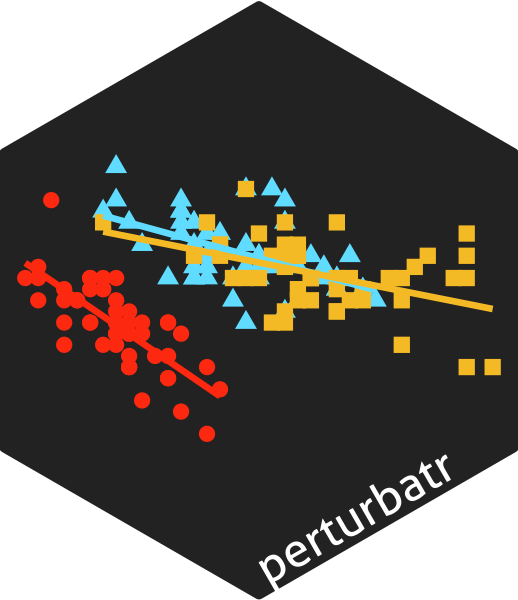README.md
In cbg-ethz/knockout: Statistical Analysis of High-Throughput Genetic Perturbation Screens
perturbatr 
Analysis of high-throughput gene perturbation screens in R.
Introduction
perturbatr does stage-wise analysis of large-scale genetic
perturbation screens for integrated data sets consisting of multiple screens.
For multiple integrated perturbation screens a hierarchical model that
considers the variance between different biological conditions is fitted.
That means that we first estimate relative effect sizes for all genes.
The resulting hit lists is then further extended using a network
propagation algorithm to correct for false negatives. and positives.
data(rnaiscreen)
graph <- readRDS(
system.file("extdata", "graph_file.tsv", package = "perturbatr"))
frm <- Readout ~ Condition +
(1|GeneSymbol) + (1|Condition:GeneSymbol) +
(1|ScreenType) + (1|Condition:ScreenType)
ft <- hm(rnaiscreen, formula = frm)
diffu <- diffuse(ft, graph=graph, r=0.3)
plot(diffu)
Installation
You can install and use perturbatr either as an R library from Bioconductor,
or by downloading the tarball.
If you want to use the recommended way using Bioconductor just call:
if (!requireNamespace("BiocManager", quietly=TRUE))
install.packages("BiocManager")
BiocManager::install("perturbatr")
library(perturbatr)
from the R-console.
Installing the package using the downloaded tarball works like this:
R CMD install <perturbatr.tar.gz>
where perturbatr.tar.gz is the downloaded tarball.
Documentation
Load the package using library(perturbatr). We provide a vignette for the package that can be called using: vignette("perturbatr").
Author
- Simon Dirmeier simon.dirmeier@bsse.ethz.ch
cbg-ethz/knockout documentation built on Feb. 13, 2020, 7:27 p.m.
perturbatr 
Analysis of high-throughput gene perturbation screens in R.
Introduction
perturbatr does stage-wise analysis of large-scale genetic
perturbation screens for integrated data sets consisting of multiple screens.
For multiple integrated perturbation screens a hierarchical model that
considers the variance between different biological conditions is fitted.
That means that we first estimate relative effect sizes for all genes.
The resulting hit lists is then further extended using a network
propagation algorithm to correct for false negatives. and positives.
data(rnaiscreen)
graph <- readRDS(
system.file("extdata", "graph_file.tsv", package = "perturbatr"))
frm <- Readout ~ Condition +
(1|GeneSymbol) + (1|Condition:GeneSymbol) +
(1|ScreenType) + (1|Condition:ScreenType)
ft <- hm(rnaiscreen, formula = frm)
diffu <- diffuse(ft, graph=graph, r=0.3)
plot(diffu)
Installation
You can install and use perturbatr either as an R library from Bioconductor,
or by downloading the tarball.
If you want to use the recommended way using Bioconductor just call:
if (!requireNamespace("BiocManager", quietly=TRUE))
install.packages("BiocManager")
BiocManager::install("perturbatr")
library(perturbatr)
from the R-console.
Installing the package using the downloaded tarball works like this:
R CMD install <perturbatr.tar.gz>
where perturbatr.tar.gz is the downloaded tarball.
Documentation
Load the package using library(perturbatr). We provide a vignette for the package that can be called using: vignette("perturbatr").
Author
- Simon Dirmeier simon.dirmeier@bsse.ethz.ch
Add the following code to your website.
For more information on customizing the embed code, read Embedding Snippets.
